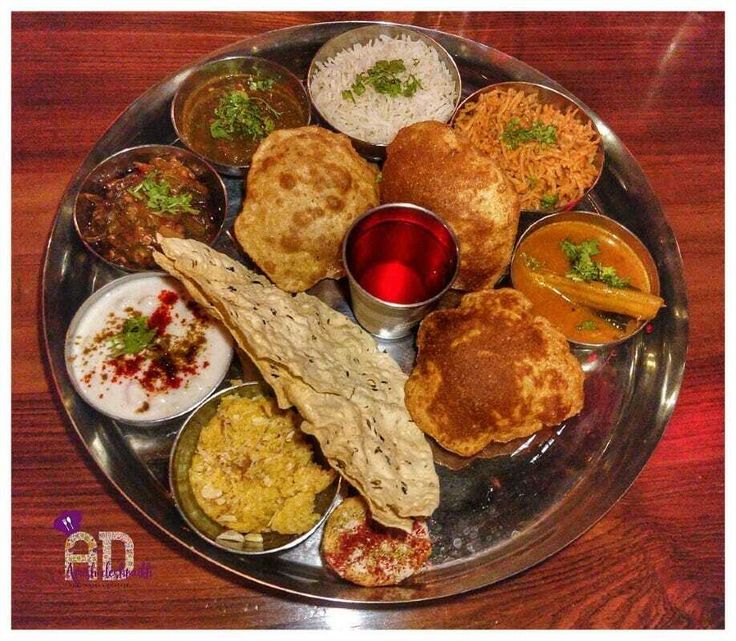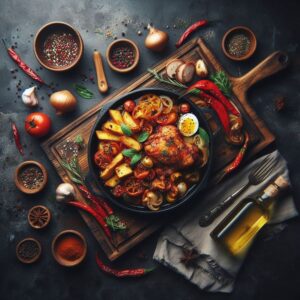Sindhi cuisine, one of the most distinctive and vibrant food traditions in Pakistan, offers a rich culinary experience that is as diverse and colorful as the culture of Sindh itself. Located in the southeastern part of Pakistan, Sindh is home to a unique blend of flavors, textures, and cooking techniques that reflect the region’s history, geography, and traditions. From the bustling streets of Karachi to the remote villages along the Indus River, Sindhi food is renowned for its use of bold spices, aromatic herbs, and a variety of cooking methods.
Sindhi food is not just about taste—it’s about tradition, hospitality, and a deep connection to the land. With an emphasis on slow-cooked dishes, spicy curries, and fresh, locally sourced ingredients, Sindhi cuisine offers a delightful journey into the heart of Pakistan’s food culture. In this blog, we will explore some of the most beloved Sindhi dishes, their cultural significance, and why Sindhi food continues to be a favorite across the country.
The Flavors and Ingredients of Sindhi Cuisine
Sindhi food is characterized by its use of a wide variety of spices and bold flavors. Unlike the more delicate, aromatic spices of some other South Asian cuisines, Sindhi food tends to lean towards earthy, robust flavors with a liberal use of chilies, garlic, ginger, and cumin. Tamarind, dried pomegranate, and yogurt are also common ingredients that lend a tangy or sour note to many dishes.
Key ingredients include:
- Rice: A staple in many Sindhi dishes, particularly in biryanis and pilafs.
- Wheat: Used to make breads like roti and paratha.
- Meats: Lamb, goat, chicken, and beef are commonly used, with seafood also being a feature in coastal areas like Karachi.
- Spices: Sindhi dishes use a lot of fresh chilies, garam masala, cumin, coriander, and turmeric. The use of dried fruit like tamarind and dried plums adds a distinct tanginess to many dishes.
- Vegetables: Sindhi cuisine includes an abundance of vegetables, from spinach and okra to eggplant and cauliflower.
The cooking techniques used in Sindhi food are as varied as the flavors. From slow-cooked stews and curries to deep-fried snacks and grilled meats, the focus is always on bringing out the full depth of flavor.
Must-Try Sindhi Dishes
1. Sindhi Biryani
No conversation about Sindhi food is complete without mentioning Sindhi Biryani. Unlike the milder biryanis of other regions, Sindhi Biryani is famous for its spicy, tangy flavor. The rice is cooked with marinated meat (usually chicken or mutton), tomatoes, yogurt, and an aromatic mix of spices, creating a dish that is as fiery as it is fragrant. A handful of fried potatoes and fresh coriander garnish the dish, adding to its complexity and texture. It’s typically served with raita (yogurt dip) or a cooling salad, making it a perfect dish for any occasion.
2. Sindhi Karhi
Karhi is a signature Sindhi dish made with gram flour (besan) and yogurt, cooked into a rich, thick curry. The base is prepared with fried onion, garlic, ginger, and a mix of spices, then simmered with yogurt and gram flour to create a tangy, velvety sauce. Sindhi Karhi is often served with boiled rice or roti and may be accompanied by chicken, beef, or vegetables. The tangy, savory flavors make it an unforgettable dish that embodies the heart of Sindhi cuisine.
3. Saag (Sindhi Style)
Saag is a traditional vegetable dish, usually made from mustard greens and other local leafy greens, cooked slowly with spices and ghee (clarified butter) until tender and flavorful. In Sindhi cuisine, the saag is often paired with makai ki roti (cornmeal flatbread), creating a perfect winter dish. The rustic combination of sautéed greens and crispy, buttery bread is a symbol of Sindhi hospitality and comfort food.
4. Sindhi Bihari Kebab
Bihari kebabs, a popular delicacy from Sindh, are made from marinated beef or chicken, which is spiced with a mixture of yogurt, ginger, garlic, and a special blend of spices. These kebabs are usually cooked on skewers over an open flame, giving them a smoky flavor. The result is a tender, juicy kebab that’s crispy on the outside and packed with flavor on the inside. Often served with naan, chutney, and sliced onions, Sindhi bihari kebabs are a must-try for meat lovers.
5. Sindhi Mutton Pulao
This rice dish is a comforting and aromatic mix of tender mutton, long-grain rice, and spices like cinnamon, cardamom, and cumin. It’s cooked in a single pot, allowing the flavors to meld together. Unlike biryani, Sindhi mutton pulao has a more subtle flavor, but it is still rich and satisfying. The dish is commonly enjoyed with yogurt or raita on the side.
6. Sindhi Macherie
Sindhi coastal cuisine has a lot to offer, and Sindhi Macherie (fish curry) is one of the most popular dishes from the region. The fish is cooked in a flavorful, tangy curry made with tomatoes, tamarind, and a blend of aromatic spices. The result is a hearty, zesty dish that pairs wonderfully with steamed rice. Coastal cities like Karachi have an abundance of seafood, and Sindhi Macherie is one of the dishes that best showcases the region’s love for fresh fish.
7. Dahi Wala Murgh (Yogurt Chicken)
Dahi Wala Murgh is a deliciously rich and creamy chicken curry where chicken is marinated in yogurt and cooked with a mix of spices until tender. The yogurt gives the dish a tangy depth and adds a velvety texture to the curry. The use of cilantro, mint, and fried onions as garnish elevates the flavor, making it a comforting and indulgent dish for any occasion.
8. Sindhi Seekh Kebabs
Sindhi seekh kebabs are made from minced meat, usually beef or mutton, mixed with an array of spices and herbs. The meat is shaped onto skewers and grilled or baked until juicy and flavorful. These kebabs are typically served with naan or paratha and a side of mint chutney, making them a popular choice for a delicious snack or appetizer.
Sindhi Street Food: A Feast for the Senses
Street food is an essential part of Sindhi culture, especially in Karachi, where food stalls and roadside vendors offer a wide range of snacks and quick bites. From samosas and pakoras to chana chaat and dahi puri, Sindhi street food is flavorful, affordable, and perfect for those looking to indulge in local delicacies on the go.
One of the most beloved street food items in Sindh is sindhi bun kebab, a delicious sandwich-style dish made by stuffing a spicy beef or chicken patty into a bun, often with a variety of condiments and vegetables. It’s crunchy, juicy, and packed with bold flavors.
Cultural Significance of Sindhi Food
Sindhi food is deeply intertwined with the culture and lifestyle of the people of Sindh. It is a reflection of their agricultural roots, where fresh produce, locally sourced meats, and homegrown spices are valued. Sindhi cuisine emphasizes hospitality, with dishes often prepared in large quantities to be shared with guests. Family gatherings, weddings, and celebrations are never complete without a spread of Sindhi delicacies.
The use of slow-cooking techniques, the layering of spices, and the balance of sour, spicy, and savory flavors make Sindhi cuisine a feast for the senses and a source of cultural pride for the people of Sindh.
Conclusion: A Journey into the Heart of Sindhi Flavors
Sindhi cuisine offers a deep dive into Pakistan’s rich culinary heritage. Whether you’re savoring the fiery spices of Sindhi Biryani, enjoying the tangy comfort of Sindhi Karhi, or nibbling on Bihari kebabs at a local restaurant, Sindhi food offers something for every palate. The bold flavors, robust spices, and cultural traditions behind each dish make Sindhi cuisine a true reflection of the region’s history and hospitality.
So, if you ever find yourself in Sindh or any major city in Pakistan, be sure to indulge in these mouthwatering dishes and experience the warmth, flavor, and hospitality that make Sindhi food so special.





